That’s where Facebook ads come in. Messenger ads Photo ads, video ads, carousel ads, and dynamic ads can all be set to appear in Facebook Messenger. We’ll follow the steps for Ads Manager in this post. Choose your objective Log into Facebook Ads Manager and select the Campaigns tab, then click Create to get started with a new Facebook ad campaign. Name your campaign Scroll down to name your Facebook ad campaign and choose whether to set up an A/B split test. You’ll see the first option is to add a custom audience of people who have already interacted with your business on or off Facebook. For example, if you want to reach a new audience, your would select “Exclude people who like your Page.” If you want to promote an offer or new product to existing fans, select “People who like your Facebook Page” to reach people who already know your brand. Then, use one of these social video tools to create your video, or create a slideshow video ad in Facebook Ads Manager. For instance, our video team repurposed this blog post on how to create social ads into the following two Facebook videos: Pro tip: Check out our video strategy kit for marketers, which has lots of great insights about what types of video work best on social media. You can also use the engagements objective to drive people to an offline event, and use the lead generation objective to get them to your store or dealership to experience your product in person—for example, through a test drive.

As of September 2018, more than 2.2 billion people are using Facebook.
That huge, global audience means Facebook is a key marketing platform for just about every business. But the ever-changing Facebook algorithm can make it a challenge to connect organically with fans.
That’s where Facebook ads come in. With micro-targeting features that allow you to reach your exact target audience based on demographics, location, interests, and even behaviors. You can always get your message in front of the people who are most likely to want your products or services.
That’s great for your budget, conversion rates, and return on investment. You only pay to reach the most valuable potential customers. But it’s important to understand the different ad types and targeting options before you dive in if you want to get the best results.
In this complete guide to Facebook advertising, we’ll walk you through everything you need to know about Facebook ads, from planning your first ad to developing advanced Facebook ad campaign strategies.
Table of contents
Types of Facebook ads
Photo ads
These simple ads are great way to get started with Facebook advertising. You can create one with just a few clicks by boosting an existing post with a photo from your Facebook Page.
Photo ads may be simple, but that doesn’t mean they have to be boring. For example, you might think socks are a pretty ho-hum product, but Happy Socks puts them in surprising contexts to create fun Facebook photo ads.
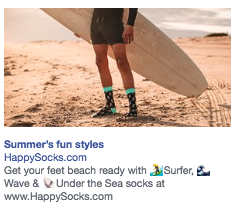
Video ads
Video ads can show your team or your product in action, or they can simply be aspirational. The video in this ad from Noom says nothing specific about the service itself, but provides clear motivation to learn more.
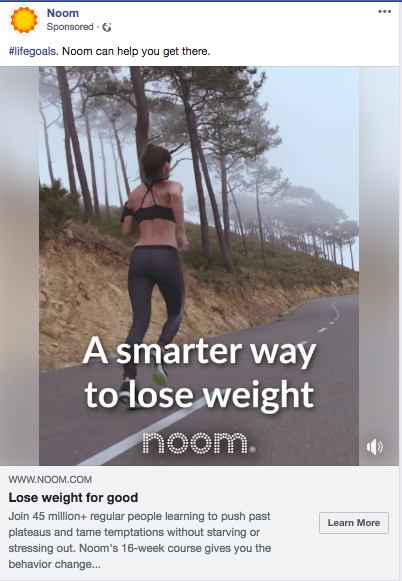
Carousel ads
A carousel ad uses up to 10 photos or videos to showcase your product or service. You can use this format to highlight different benefits of one product, a number of different products, or even use all the photos together to create one large panorama image, like this:

The IT company Paessler AG used carousel ads to promote its free card game: The Game Against Downtime. Each pane in the carousel ad showed one card from the game, which is modeled after Cards Against Humanity but with an IT theme. The result was a 51 percent lower cost per lead compared to ad campaigns they had run in the past.
Slideshow ads
Slideshow Facebook ads offer an easy way to create short video ads from a collection of still photos or existing video clips. They have eye-catching motion, just like videos, but use much less bandwidth, so they load well even for people on slow internet connections.

You can also add text and music. If you don’t have photos of your own, you can choose stock photos from Facebook’s collection.
Collection ads
These ads, which are offered only for mobile devices, allow you to showcase one or more products that customers can click to buy.
Collection ads pair with Instant Experiences (more on those below) to allow people to buy your products without ever leaving Facebook. This makes online shopping easy when people are on-the-go and may not have a great internet connection.
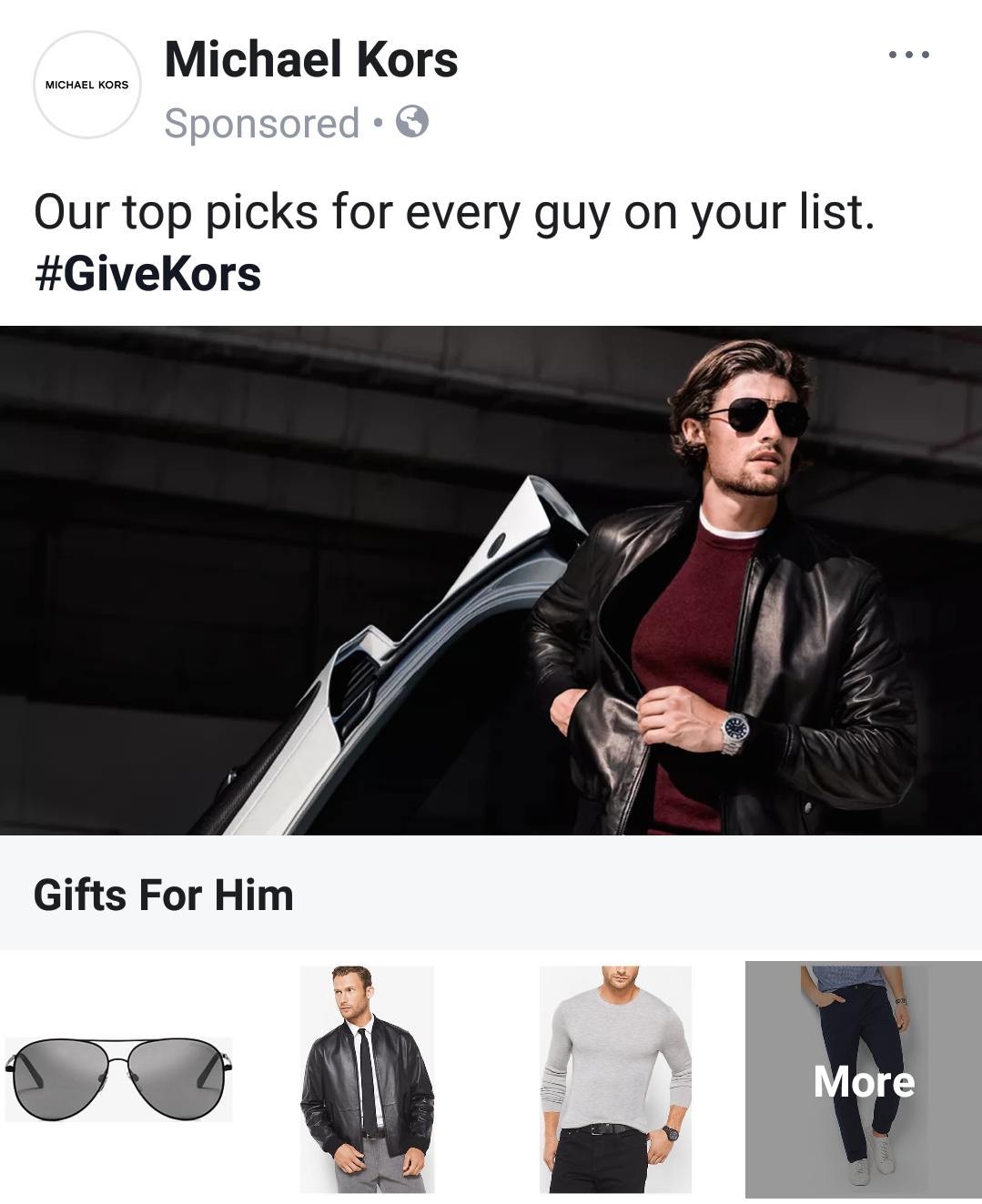
Instant Experience ads
Instant Experience ads used to be called Canvas. They’re a full-screen ad format that loads 15 times faster than a mobile website outside of Facebook, like this example from Cirque du Soleil.
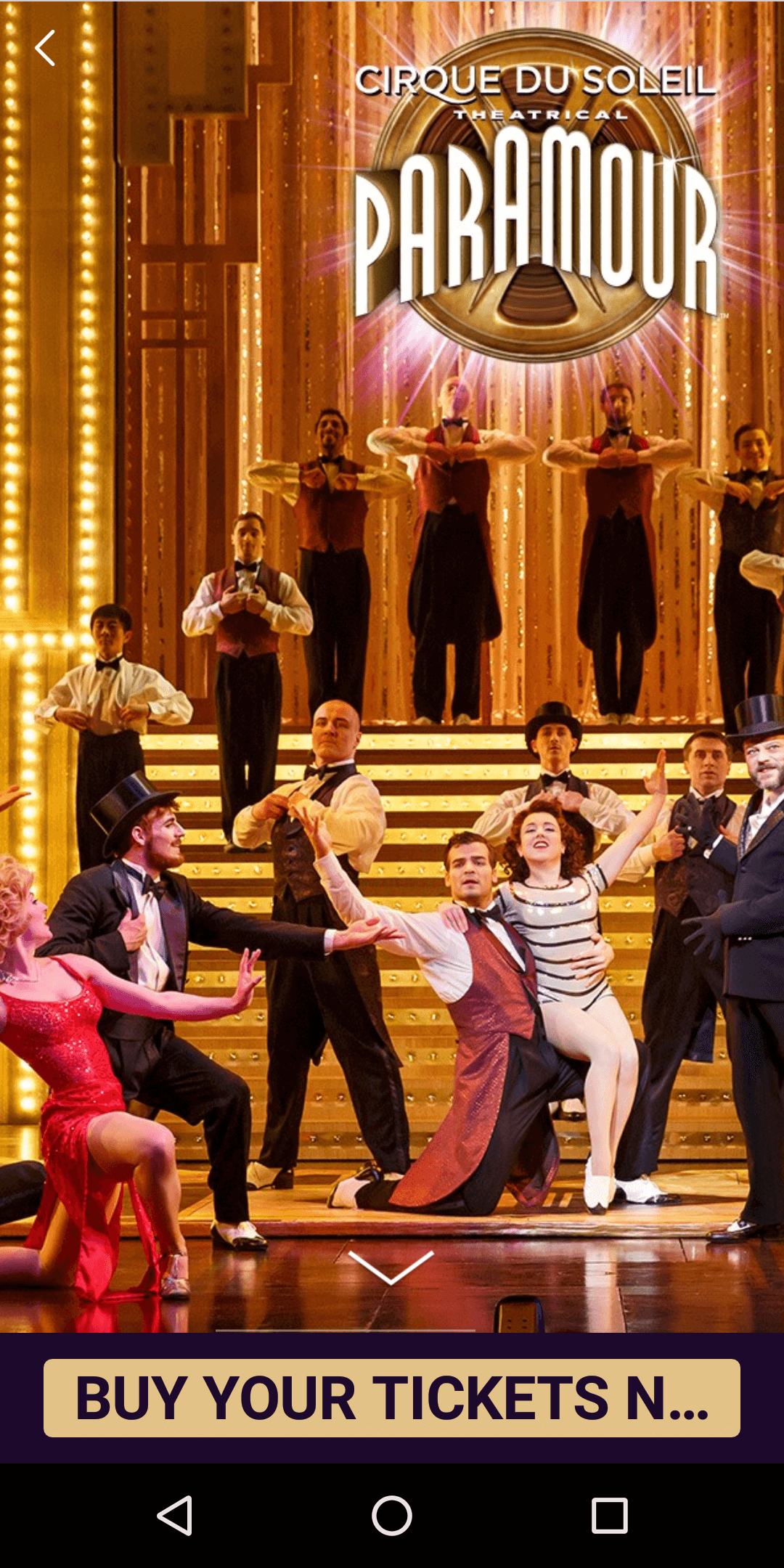
If you’re using the Facebook Pixel on your website (and you should be), it’s automatically added to your Instant Experience ads to allow full tracking.
Lead ads
Lead ads are only available for mobile devices because they’re specifically designed to make it easy for people to give you their contact information without a lot of typing. They’re great for collecting newsletter subscriptions, signing someone up for a trial of your product, or otherwise allowing people to ask for more information from you.
Philosophy used lead ads to promote product samples in the UK, generating more than 9,000 leads.
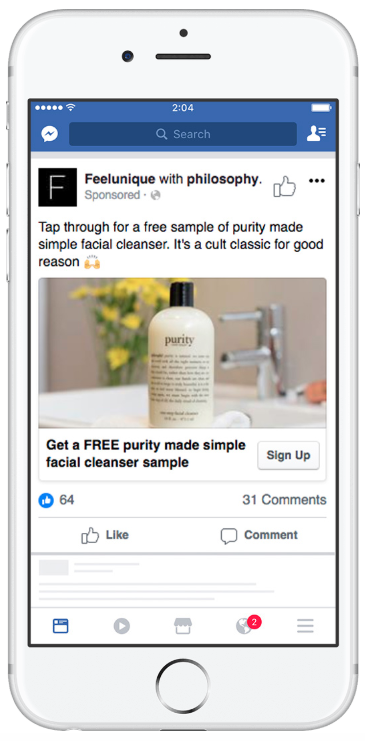
Because these ads are such a great way to feed your sales funnel, we’ve got a whole guide to using Facebook lead ads that breaks down all the details you need to know to make the most of this important type of Facebook ad campaign.
Dynamic ads
Dynamic ads allow you to promote targeted products to the customers who are most likely to be interested in them. For instance, if someone has visited a product page or placed a product in their shopping cart on your website, but then abandoned the purchase, dynamic ads for that precise product will appear in their Facebook feed. This reminds the potential customer to complete the purchase, and can be a very effective Facebook marketing strategy.
For example, after I hit my maximum number of free New York Times articles this month, I started seeing ads with a subscription offer in my Facebook news feed.
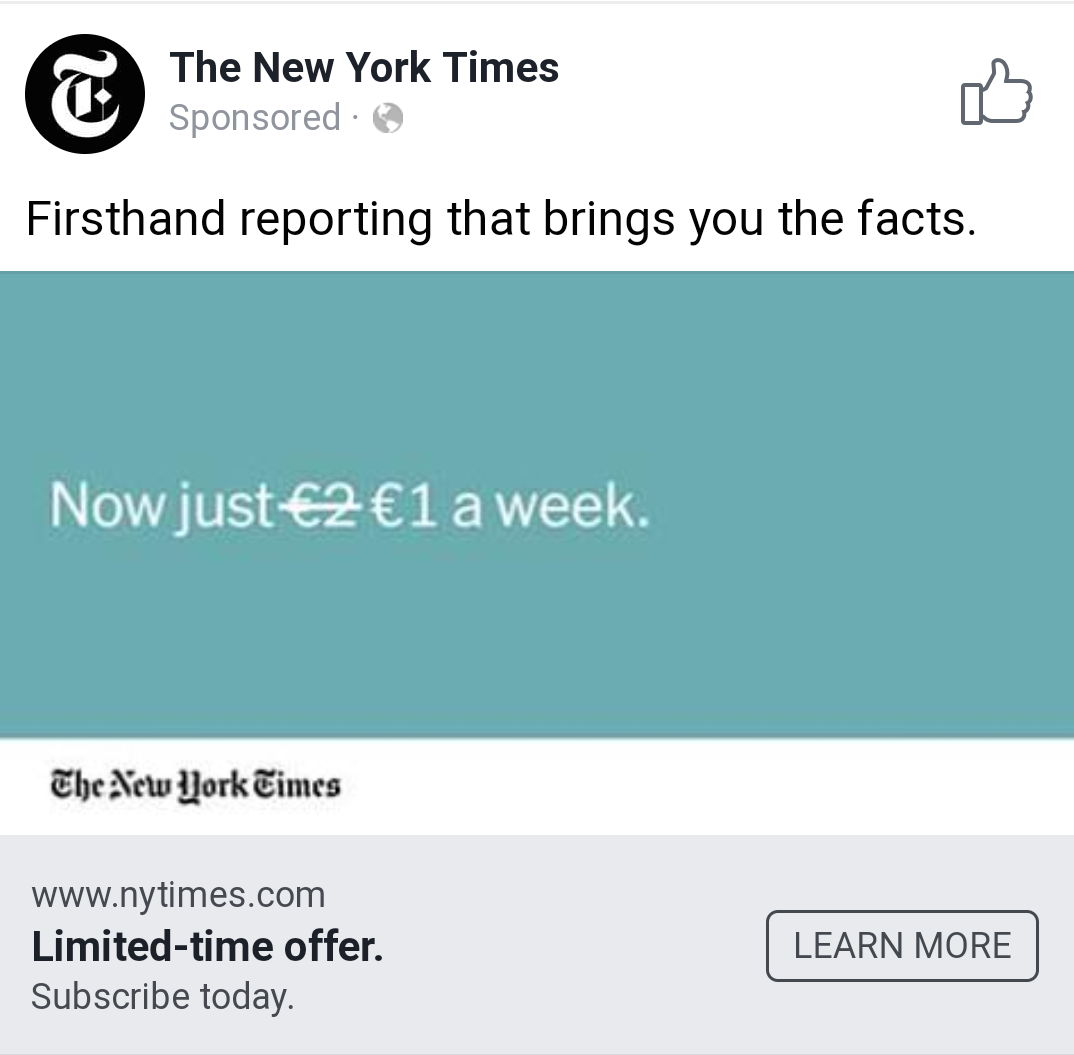
Messenger ads
Photo ads, video ads, carousel ads, and dynamic ads can all be set to appear in Facebook Messenger. This extra placement gives you access to the 1.3 billion people who use Messenger every month. When creating your ad, simply choose Messenger as the desired placement (you also need to select Facebook feed).
Here’s what an ad looks like in the Messenger app:
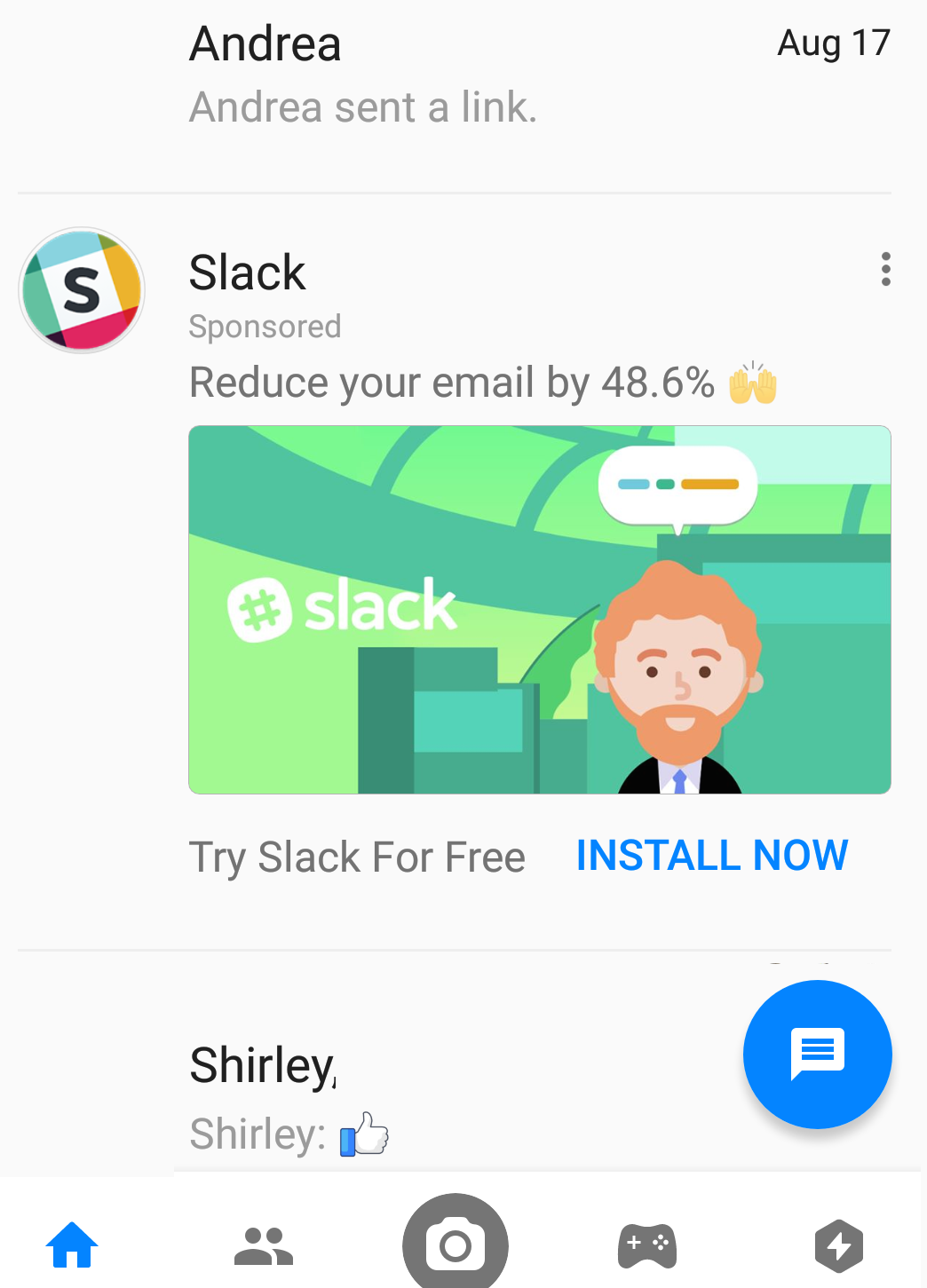
You can also run “click-to-Messenger” ads in the Facebook feed. These ads feature a call-to-action button that opens a Messenger conversation with your Facebook Page, so people can have a one-on-one conversation with one of your salespeople or customer service reps.

How to advertise on Facebook: A step-by-step guide
If you already have a Facebook business page (and you should), you can head straight to the Facebook Ads Manager or Business Manager to create your Facebook ad campaign. If you don’t yet have a business page, you’ll need to create one first.
We’ll follow the steps for Ads Manager in this post. If you’d prefer to use Business Manager, you can get the details in our post on how to use Facebook Business Manager.
Step 1. Choose your objective
Log into Facebook Ads Manager and select the Campaigns tab, then click Create to get started with a new Facebook ad campaign.
Facebook offers 11 marketing objectives based on what you want your ad to accomplish. Here’s how they align with business goals:
- Brand awareness: Introduce your brand to a new audience.
- Reach: Expose your ad to as many people in your audience as possible.
- Traffic: Drive traffic to a specific web page or app.
- Engagement: Reach a wide audience to increase the number of post or Page Likes, increase attendance at your event, or encourage people to claim a special offer.
- App installs: Get people to install your app.
- Video views: Get more people to watch your videos.
- Lead generation: Get new prospects into your sales funnel.
- Messages: Encourage people to contact your business using Facebook Messenger.
- Conversions: Get people to take a specific action on your website (like subscribe to your list or buy your product).
- Catalog sales: Connect your Facebook ads to your product catalog to show people ads for the products they are most likely to want to buy.
- Store visits: Drive nearby customers to bricks-and-mortar stores.

Choose a campaign objective based on your goals for this particular ad. Keep in mind that for conversion-oriented objectives (like sales) you can pay per action, but for exposure objectives (like traffic and views) you will pay for impressions.
For this example, we’ll choose the Engagements objective. Some of the options you see in the next steps will vary slightly based on which objective you choose.
Step 2. Name your campaign
Scroll down to name your Facebook ad campaign and choose whether to set up an A/B split test. You will also choose whether to turn on budget optimization. This option can be useful if you’re using multiple ad sets, but for now you can leave it turned off.
For the Engagements objective, you’ll also choose whether to focus on post engagement, page likes, or event responses. For this example, we’ll choose Page likes.

Click Set Up Ad Account to continue.
Step 3. Set up your ad account
If you’ve already set up an account, you won’t see this step, of course. You’ll go straight through to targeting your audience.
But if you’re new to Facebook advertising, you’ll need to enter some key account details here. Enter your country,…

COMMENTS